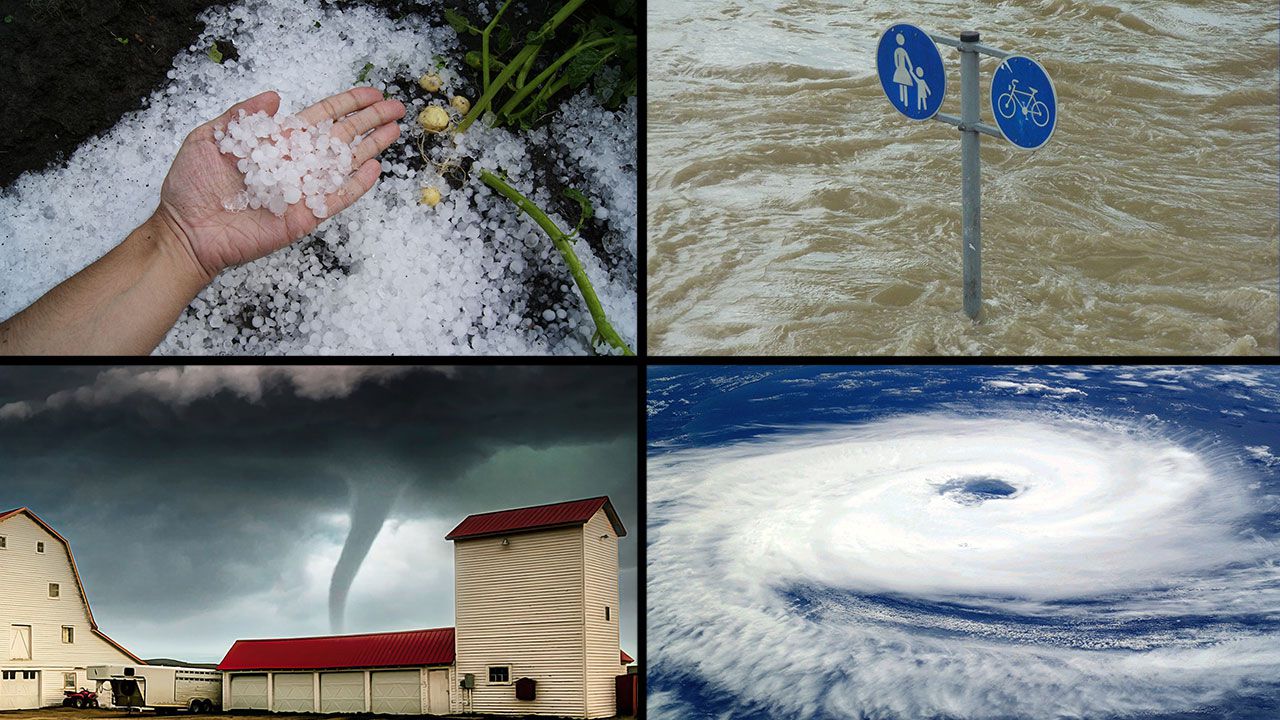Texas is known for its, sometimes, crazy weather with large temperature swings and shifts from full sunshine to severe thunderstorms all in the same day.
With severe weather possible this afternoon, we have some tips on what to do during certain severe weather situations.
KSAT meteorologists said forecasts currently show the possibility of hail and tornadoes on Monday afternoon, especially east of 281.
Before we get to the tips, however, if you want to stay up-to-date on the weather in the area you can download the KSAT 12 Weather app on your iPhone or Android phone.
There’s also a list of articles at the bottom of this page that can help you during bouts of severe weather.
Here are tips from Ready.gov to help you prepare for some extreme weather situations:
Flood tips:
Find safe shelter and do not walk, swim or drive through floodwaters. ‘Turn Around, Don’t Drown’Stay off bridges that are over fast-moving water. Just six inches of moving water is enough to knock a person down.Evacuate if local authorities have told you to do so.Move to higher ground or a higher level of your home if water is rising.Stay where you are if your home is experiencing flooding and wait to be rescued.Do not climb into a closed attic to avoid getting trapped by rising floodwater.Stay inside your car if it is trapped in rapidly moving water and get on the roof if water is rising inside the car.Keep important documents in a waterproof container.
Hail tips:
Stay indoors and keep away from windows, glass doors and skylights.Close drapes and blinds to protect against broken glass and flying debris.Keep pets indoors.Take reasonable steps to protect your property from damage — for example, boarding up windows.Don’t leave your vehicle if you’re driving. Pull over and wait out the storm.
Hurricane tips:
Atlantic hurricane season is typically June 1 through Nov. 30. Hurricanes can cause major damage from winds and flooding, however, storm surges are historically the leading cause of damage during a hurricane.
If you live in a mandatory evacuation zone and local officials tell you to evacuate, do so immediately.Go to the highest level of a building if you are trapped by flooding – do not climb into a closed attic.Do not walk, swim or drive through floodwaters.Do not wade in floodwater, which can contain dangerous pathogens that cause illnesses. Underground or downed power lines also can electrically charge the water.Save phone calls for emergencies. Use text messages and social media to communicate with friends and family.
Tornado tips:
Knowing the signs of a tornado is crucial to helping you prepare. The obvious sign is the rotating, funnel-shaped cloud that most people are familiar with but there could also be an approaching cloud of debris or a loud roar like a freight train, according to Ready.gov.
Identify a safe location in your home, away from windows, and bring the entire family to that space. This includes pets. Avoid outside walls if possible and choose a room on the lower level if you have a multi-story home.Avoid seeking shelter near heavy objects that could fall on top of you.Wear shoes and a bike helmet if you have one available.Crouch as low to the ground as possible, face down and use your arms to protect your neck and head.If you live in a mobile home, seek shelter elsewhere if possible. Many mobile home parks have storm shelters for residents.If you find yourself in your vehicle – do NOT try to outrun the tornado. Find a nearby building and avoid all bridges and underpasses.If you’re unable to find shelter and are outside, find a flat, low location and lay down facing the ground.
If you have experienced damage to your personal property from a weather event, document the damage with photographs and then contact your insurance company for assistance.
Want to know how hail forms? KSAT meteorologist Sarah Spivey explains how it works below:
Here are some articles you might also want to check out ahead of or during severe weather situations:
Be prepared for disastersMAP: Current power outages in Bexar CountyMap: Emergency road closures in San Antonio, Bexar County, Hill Country and TexasAvoid these notorious roadways prone to flooding during heavy rain in San AntonioLIVE: Doppler radarLatest watches/warnings from the National Weather ServiceTips for staying safe while driving in the rainCPS Energy offers power outage tipsHow to protect your car during a hail storm if you don’t have a garage

